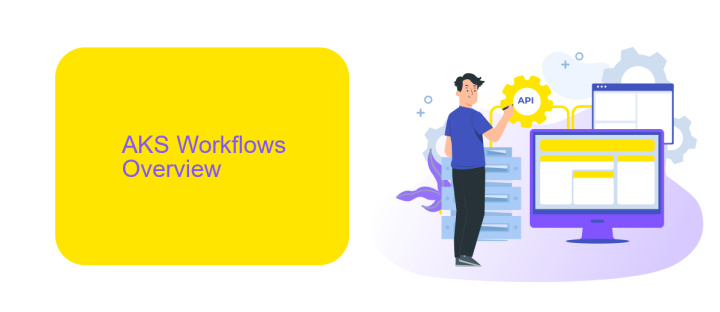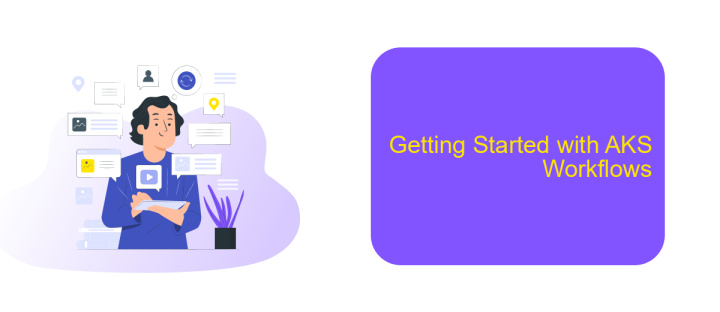AKS Workflow Automation
In today's fast-paced business environment, efficiency and productivity are paramount. AKS Workflow Automation offers a seamless solution to streamline your operations, reduce manual errors, and enhance overall performance. By automating repetitive tasks and integrating advanced technologies, AKS empowers organizations to focus on strategic initiatives, driving growth and innovation. Discover how AKS Workflow Automation can transform your business processes and elevate your success.
Introduction
AKS Workflow Automation is revolutionizing the way businesses manage their operations, offering a streamlined approach to handle repetitive tasks efficiently. By automating workflows, companies can significantly reduce manual labor, minimize errors, and enhance productivity. This technology is particularly beneficial for organizations looking to optimize their processes and allocate more time to strategic initiatives.
- Improved efficiency and productivity
- Reduced operational costs
- Enhanced accuracy and consistency
- Better resource allocation
One of the key components of successful workflow automation is the integration of various tools and services. Platforms like ApiX-Drive make it easier to connect different applications, ensuring seamless data flow and communication between systems. By leveraging such integrations, businesses can further enhance their workflow automation, achieving higher levels of efficiency and accuracy. As a result, AKS Workflow Automation stands as a vital asset for modern enterprises aiming to stay competitive in a rapidly evolving market.
AKS Workflows Overview

AKS Workflows are designed to streamline and automate the deployment, scaling, and management of containerized applications within Azure Kubernetes Service (AKS). By leveraging AKS Workflows, organizations can ensure consistent and repeatable processes, reducing the likelihood of human error and improving operational efficiency. These workflows typically involve a series of automated steps, including code integration, build, testing, and deployment, which can be orchestrated using CI/CD tools like Azure DevOps or Jenkins.
Integration services such as ApiX-Drive can further enhance AKS Workflows by automating the connectivity between various applications and services. ApiX-Drive facilitates seamless data transfer and synchronization, ensuring that all components of the workflow are updated in real-time. This integration capability is particularly useful when dealing with complex, multi-cloud environments or when integrating third-party tools into the workflow. By utilizing such services, organizations can achieve greater agility and responsiveness in their DevOps practices, ultimately leading to faster delivery of high-quality software.
Benefits of Using AKS Workflows

Implementing AKS workflows offers a multitude of advantages for organizations looking to streamline their operations. By automating routine tasks, AKS workflows enhance efficiency and reduce the likelihood of human error, ensuring that processes run smoothly and consistently.
- Scalability: AKS workflows can easily scale with the growth of your organization, allowing you to handle increased workloads without additional manual intervention.
- Cost-Effectiveness: Automation reduces the need for manual labor, leading to significant cost savings over time.
- Integration: Tools like ApiX-Drive facilitate seamless integration with various services, enabling a unified workflow across different platforms.
- Improved Monitoring: AKS workflows provide real-time monitoring and alerts, helping to identify and resolve issues promptly.
- Consistency: Automated workflows ensure that tasks are performed uniformly, maintaining high standards of quality and reliability.
In conclusion, leveraging AKS workflows can significantly enhance operational efficiency, reduce costs, and improve the overall quality of service. By integrating with services like ApiX-Drive, organizations can further streamline their processes, ensuring a cohesive and efficient workflow environment.
Getting Started with AKS Workflows

Starting with AKS workflows requires a fundamental understanding of Azure Kubernetes Service (AKS) and its automation capabilities. AKS allows you to deploy, manage, and scale containerized applications using Kubernetes, providing a robust platform for workflow automation.
To begin, ensure that your AKS cluster is properly set up and configured. This involves creating an AKS cluster in the Azure portal, configuring your Kubernetes environment, and setting up necessary networking and security components. Proper setup ensures seamless integration and operation of your workflows.
- Set up your AKS cluster in the Azure portal.
- Configure Kubernetes environment and networking.
- Integrate with CI/CD pipelines for automated deployments.
- Use tools like ApiX-Drive for seamless integration with third-party services.
Once your AKS environment is ready, you can start defining and deploying your workflows. Leverage tools like ApiX-Drive to connect your AKS workflows with various third-party services, enhancing your automation capabilities. This integration ensures that your workflows are efficient, scalable, and easy to manage.
Best Practices for AKS Workflow Automation
To ensure effective AKS workflow automation, it is essential to implement a robust CI/CD pipeline. This can be achieved by integrating tools like Jenkins, GitHub Actions, or Azure DevOps to streamline the deployment process. Regularly updating and maintaining these pipelines ensures that your Kubernetes clusters remain secure and efficient. Additionally, leveraging IaC (Infrastructure as Code) tools such as Terraform or ARM templates can help manage and automate the provisioning of AKS resources, ensuring consistency and reducing human error.
Another best practice is to monitor and optimize resource usage continuously. Utilize Azure Monitor and Azure Log Analytics to gain insights into your cluster's performance and identify potential bottlenecks. For seamless integration of various applications and services, consider using ApiX-Drive, which simplifies the process of connecting different tools and automating workflows. By adhering to these practices, you can enhance the reliability, scalability, and efficiency of your AKS workflow automation.
FAQ
What is AKS Workflow Automation?
Why should I use workflow automation in AKS?
How can I integrate third-party services with my AKS workflows?
What are some common use cases for AKS Workflow Automation?
How do I get started with AKS Workflow Automation?
Apix-Drive is a universal tool that will quickly streamline any workflow, freeing you from routine and possible financial losses. Try ApiX-Drive in action and see how useful it is for you personally. In the meantime, when you are setting up connections between systems, think about where you are investing your free time, because now you will have much more of it.

